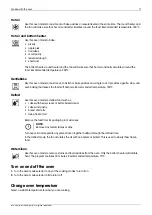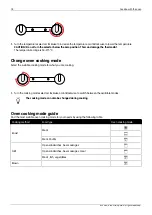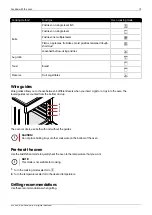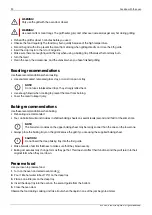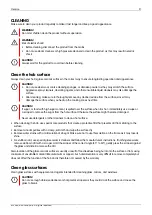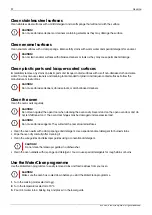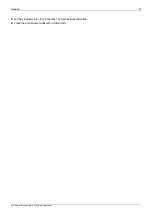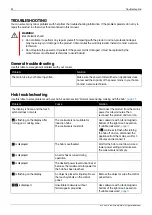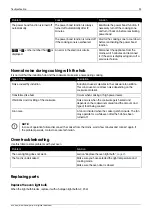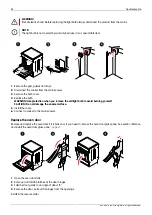
Cooking with the hob
11
© 2020, Elon Group AB. All rights reserved.
COOKING WITH THE HOB
Hob overview
Hob surface
The hob surface is made of a solid glass-ceramic material. Here is some advice on how to use and maintain the surface.
• The surface is very resistant to temperature changes but can be damaged by falling, heavy objects. The surface might
break immediately or a while after being hit.
WARNING!
If the surface breaks, immediately disconnect the product from the mains. Do not use the product.
• Make sure the cooking zone and the bottom of the cookware are clean and dry to improve performance and prevent
surface damage.
CAUTION!
If sugar, or food with high sugar content, is spilled over the surface when it is hot - immediately use a
wipe or a scraper to remove the sugar from the hot surface. Otherwise the surface might become
damaged.
Never use detergents or other cleaners to clean a hot surface.
• Do not use the hob as a storage area as it may result in scratches or damages.
• Do not use aluminium or plastic cookware on hot cooking zones.
• Do not place any plastic objects or aluminium foil on the hob.
Hob operating principle
Your hob is operating by the principle of induction. This means that heat is produced directly in the bottom of the
cookware and that the hob surface is heated only indirectly when the cookware gets hot. No heat is generated if you turn
on a cooking zone when there is no cookware placed on the zone. For induction to function, the bottom of the cookware
must be made of a ferromagnetic material.
Suitable cookware
Make sure your cookware is suitable for induction heating.
WARNING!
Do not insert equipment between the cooking zone and the bottom of the cookware, for example equipment
that makes it possible to use non-magnetic cookware. Use of such equipment may cause burns and damage
on the cooker.
Consider the following aspects when choosing cookware for your induction hob.
• Examples of suitable cookware are cookware made of steel, enamel-coated steel pans, and cast iron pans. If you are
uncertain, attach a magnet to the bottom of the cookware. If the magnet sticks, the cookware is made of ferromagnetic
material and therefore suitable for an induction hob.
• Only use cookware with a flat bottom. Concave or convex bottoms, whether intended or not, may affect the heating
process and damage the hob surface and the cookware.
• The cookware must have a thick bottom of at least 2.25 mm.
• Minimum cookware diameter depends on the cooking zone diameter:

















